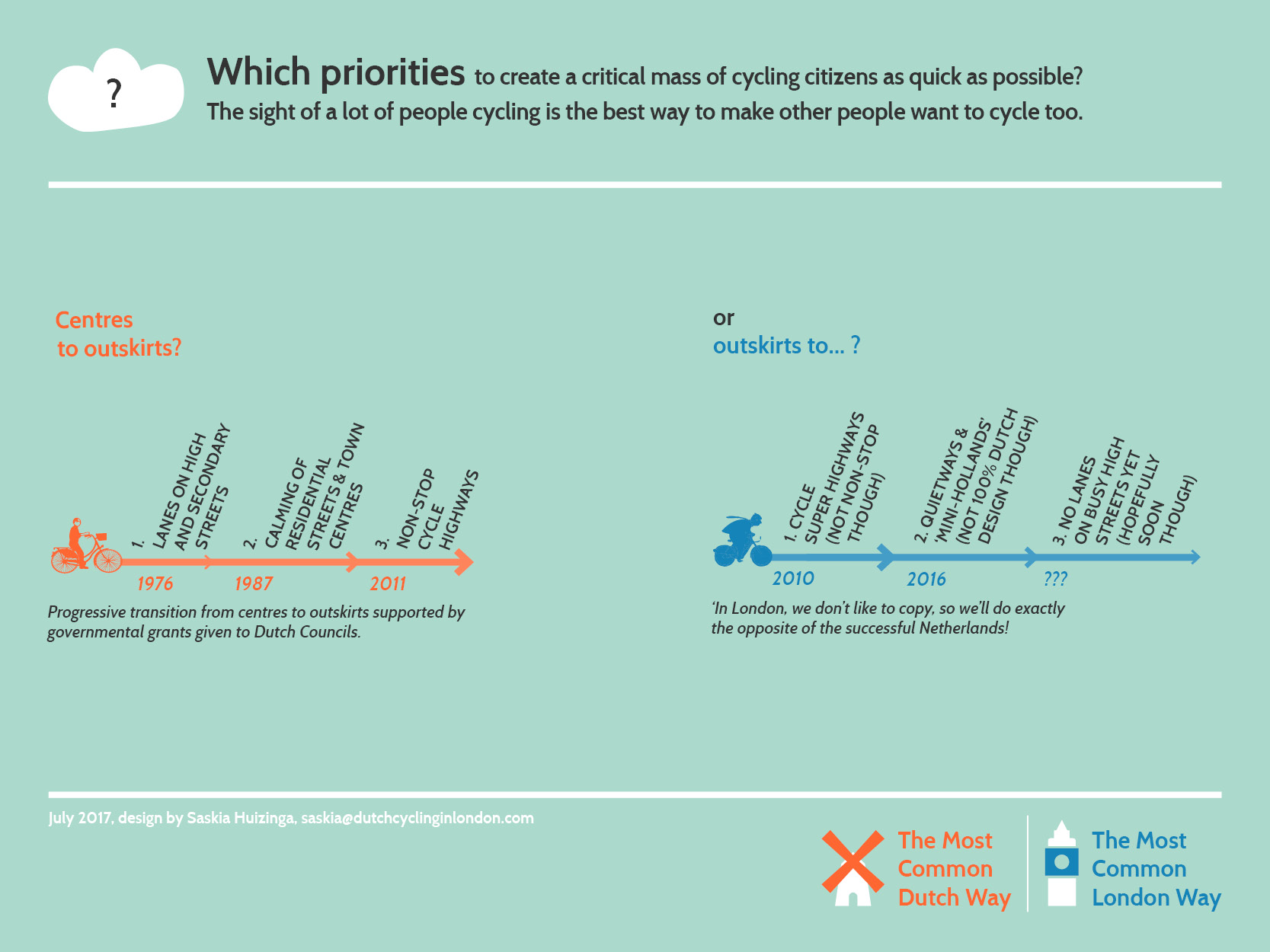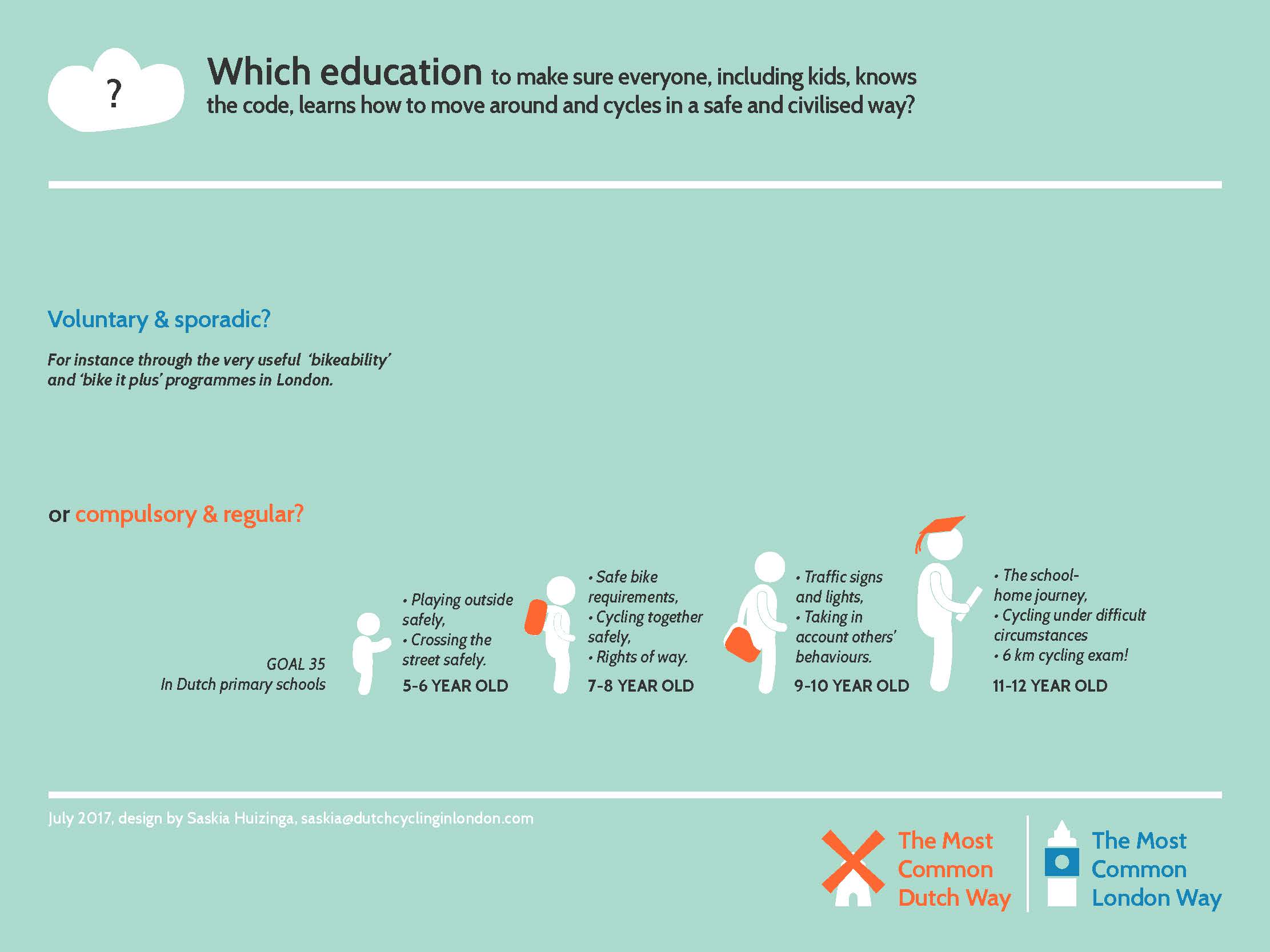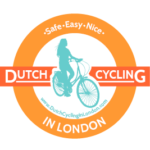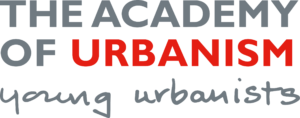DISCOVER
Which safety design measures to protect people from faster and larger vehicles?
Less famous than the ‘strict liability’ concept, a key approach in the Netherlands in terms of safety measure is called ‘sustainable safety’.
Golden approach
SUSTAINABLE SAFETY. One of the Dutch golden approach is that streets must be designed in a way that road users instantly understand how it works. See how this applies on how the Dutch mix/segregate road users.
photo@fietschic

Sustainable Safety
Introduced in 1992 to prevent severe injuries, this successful approach is based on five principles:
- Functionality (of roads)
- Homogeneity (of mass, speed and direction of road users)
- Predictability (of road course and road user behaviour by a recognizable road design)
- Forgivingness (of both the road/street environment and the road users)
- State awareness (by the road user)
Read more about this approach on the great website of Mark Wagenbuur.
Below, more information about two of these principles.
Homogeneity of mass and speed of road users
Ideally, Dutch street design tries as much as possible to eliminate large differences in speed and mass of different road users because these are dangerous, especially for the most vulnerable.
Two solutions are usually employed:
- Road users are forced to have the same speed through the essential use of traffic-calming filters. This is very much employed for town centre streets (shared space) and residential streets (woonerf) to allow for one, visitors to wander between shops and facilities and for the other, kids to play on the street.
- Different road users are segregated as much as possible. This solution is very good for through roads where speed has an importance. We get a complete street where pedestrians (2-3 mph), cyclists (9-15 mph) and motorised vehicles (20 mph to more when no traffic) do not bother each other.
Predictability of road course/road user behaviour by recognisable road design
Dutch streets and spaces are made to be instantly understood by road users even without any help of signs. Filters and obstacles, street material and colour, level differences and carriage width are all there to give road users signals on how to behave and keep everyone safe. That way, it is also clear what it is expected from everyone and every road user can predict what the others will do or not.
In the examples described earlier, that means:
- either everyone will keep going straight in their own protected lane and therefore, it is ok to go fast,
- or, everyone can potentially and spontaneously zigzag and therefore, it is important to be extra careful.
Is there any sustainable safety design in London?
Probably but most streets are relying on their signs, markings and even crossing patrols to communicate the appropriate behaviour to have to their road users.
This is very naive to think people will remember to follow rules and control themselves at all times. Human beings are unpredictable by nature, especially under stress or if they are new in town, like many can experience in a big busy metropolis like London.
What can we regularly find in London that would NOT pass the two Dutch Sustainable Safety principles we have just been through?
- Main roads without bike lanes or paths
- Bike lanes on pavements or public spaces
- Shared streets without traffic-calming filters
- Bus lanes shared with cyclists
- Pedestrian crossings not combined with traffic-calming filters.
Sign up to our newsletter
A project supported
by the Academy of Urbanism
A project initiated
by Saskia Huizinga





